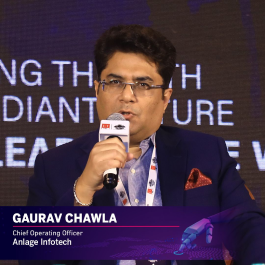

Thinking of taking your operations global—but want full control, security, and long-term value? A captive unit might be the strategic move you’ve been overlooking.
A captive unit is a wholly owned subsidiary or an in-house center established by a multinational corporation (MNC) in a foreign country to carry out strategic functions such as technology development, finance, HR, analytics, or customer support. Unlike outsourcing, a captive unit allows the parent company to retain complete control over operations, data, intellectual property, and cultural alignment—while benefiting from global cost and talent arbitrage.
India has rapidly become the global hub for establishing captive units thanks to its deep talent pool, cost efficiencies, and robust digital infrastructure. As of 2024, India is home to over 1,700 Global Capability Centers, contributing more than $64.6 billion to the economy annually and employing over 1.9 million professionals. The country’s expertise in domains like software engineering, data science, financial operations, and customer experience makes it the ideal destination for building your next strategic hub.
So how exactly do you set up a captive unit in India? This guide walks you through the step-by-step process.
Before jumping into the mechanics, clarify why you're establishing a captive unit. Is it to drive innovation in product engineering? Streamline back-office functions? Build a digital transformation hub?
Understanding the business rationale determines what kind of offshore development center or business services team you need, and helps align internal stakeholders across geographies. It also shapes your long-term approach to hiring, compliance, and scalability.
There are three primary models to choose from when setting up a captive unit:
Each has trade-offs in terms of speed, control, investment, and compliance. Many companies initially opt for the Build-Operate-Transfer model to de-risk the setup while ensuring a smooth transition.
India offers a variety of options depending on your priorities:
Partnering with firms that offer target consulting on location strategy can provide insights into real estate, wage benchmarks, and talent density, helping you make informed decisions.
Setting up a captive unit requires forming a legal entity in India, often as a wholly owned subsidiary. Key registrations include:
Also, ensure compliance with labor laws, FEMA guidelines, transfer pricing norms, and data privacy regulations like the DPDP Act.
Working with experts in GCC solutions or professional service providers with legal, financial, and HR advisory experience helps ensure a smooth setup.
Hiring top talent is critical for your captive unit’s success. India offers a diverse talent base across functions—from software development and cybersecurity to finance and analytics.
Modern AI recruitment tools can accelerate hiring cycles by matching candidates to job roles using intelligent algorithms, helping you build teams faster without compromising on quality.
In addition, partner firms specializing in Talent Solutions can help with employer branding, talent mapping, recruitment operations, and onboarding processes—ensuring a high-quality pipeline at scale.
Setting up physical or hybrid infrastructure depends on your captive unit’s scope and scale. Options include:
Critical aspects to plan for:
Early investment in operational excellence lays the foundation for long-term performance.
Your captive unit should be more than just a delivery center—it must function as a strategic extension of your global operations. This requires cultural integration, unified communication tools, regular performance reviews, and knowledge-sharing frameworks.
Many companies fail to derive full value from their captive unit because they treat it in isolation. Building cross-functional teams, encouraging global mobility, and involving Indian teams in product or strategy discussions leads to innovation and ownership.
Once your captive unit is up and running, shift focus toward scalability and capability maturity. Common next steps include:
Some firms go further by transforming their captive unit into a Global Capability Center, expanding mandates and deepening integration into global business lines.
To maintain momentum, invest in strong leadership, competitive compensation, and a purpose-driven culture. Set up governance dashboards to track KPIs like:
Regular reviews and a local leadership team that understands both Indian context and global business dynamics are essential.
Setting up a captive unit in India is not just about cost savings—it’s about accessing world-class talent, accelerating innovation, and building long-term strategic capabilities.
With the right approach—from location selection to legal compliance, from digital hiring tools to cultural integration—your captive unit can become a core pillar of global success. Whether you are planning a greenfield setup or considering a Build-Operate-Transfer model, leveraging local expertise and comprehensive GCC solutions will dramatically improve your outcomes.
As India continues to position itself as the global destination for innovation, every captive unit built here strengthens not only your organization’s future but the broader global ecosystem of technology and talent.

Gaurav Chawla, COO of Anlage Infotech, emphasized the transformative role of AI-powered analytics in HR at the 5th Edition of the GCC Summit 2024. Highlighting predictive analysis and smart tool utilization, he shared how these technologies can cut hiring cycle times by up to 60%, driving greater efficiency. The event took place at GMR Aerocity Hyderabad.
READ MORE